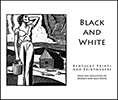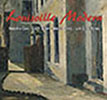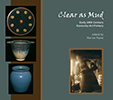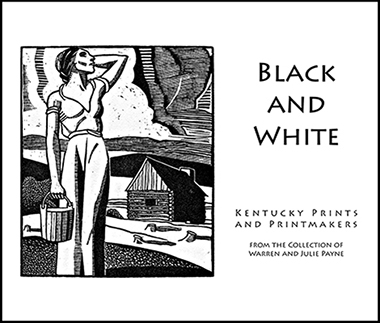
Black and White: Kentucky Prints and Printmakers from the Collection of Warren and Julie Payne
2020
$35
Click here to order. Postage: $5.
PFA Press announces its new book, Black and White: Kentucky Prints and Printmakers from the Collection of Warren and Julie Payne.
The book showcases block prints, etchings and lithographs created by 58 artists from 1828 to 2004, many from the WPA era. The artists featured have strong ties to such Kentucky places as Bellevue, Berea, Covington, Crestwood, Danville, Frankfort, Franklin, Glasgow, Harlan, Harrodsburg, Henderson, Lebanon, Lexington, Louisville, Madisonville, Manchester, Paducah, Paris, Prestonsburg, Smithland, Springfield, Versailles and more.
There is a special section at the end of the book of images of Federal Hill in Bardstown, My Old Kentucky Home. Artists also depict Abraham Lincoln’s “birthplace,” a toll gate in the Bluegrass, Natural Bridge State Park, shanty-boats on the Ohio River and a covered bridge in Frankfort.
Some of the artists will be familiar – Jouett, Duveneck, Hubbard, Brenner, Sawyier – but many readers never will have heard of most of these important Kentucky and Kentucky-related artists.
All of the 67 images are black and white and from the collection of Warren and Julie Payne of Louisville.
It will be sold in bookstores and museums after they open, but you can order this 136-page book here or on Amazon and eBay.
$35 plus $2.10 sales tax if you're in Kentucky and $5 postage. TOTAL: $42.10. We can invoice you on Paypal or you can mail us a check. Contact us.
Artists included:
Joe Adams
Maud Ainslie
Arthur Allen
Ann Stewart Anderson
Malcolm Arnett
Fritz Bade
Alfred Laurens Brennan
Carl Brenner
Darrell W. Brothers
Carl Brown
Joe Downing
Carolyn Dunbar
Frank Duveneck
EdWill Fisher
Edward Fisk
L.O. Griffith
C. Winston Haberer
Kent Hagerman
John Wezley Haywood
E. Sophonisba Hergesheimer
Ruth Hibbs-Hyland
Anna and Harlan Hubbard
E.T. Hurley
Elizabeth Rusk Jones
Matthew Harris Jouett
Wallace Kelly
L.H. King
Norman Kohlhepp
Beatrice Levy
Frank Long
C.P. Maltman
Albert Graeme Mitchell
F. Townsend Morgan
Clifford H. Morton II
Mary Spencer Nay
Paul E. Nonnast
Kenneth Ozier
Grover Page
Ralph Pearson
William Ranney
C. Cregor Reid
Frank Robbins
Paul Sample
Paul Sawyier
Mary W. Schachner
Nellie Schanzenbacher
Ralph Fletcher Seymour
Howard Simon
Walter Sorge
John A. Spelman III
Clyde Stringfield
Glen Tracy
Edward Troye
A.J. Van Leshout
Robert Wathen
Ulfert Wilke
Louise Wilkinson
Thomas Waterman Wood
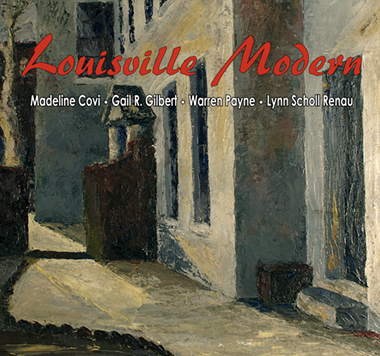
Louisville Modern: an era in art
by
Madeline Covi
Gail R. Gilbert
Warren Payne
Lynn Scholl Renau
2019
$25
Click here to order.
Louisville Modern: an era in art tells the story of the art scene in the Louisville, Kentucky-Southern Indiana area from the 1940s through the 1960s. It is both a personal account and an art-historical overview of a period that many categorize now as Mid-century Modern.
The book begins with the story of Madeline Covi, who experienced that scene firsthand. Her essay is followed by biographies of some of the artists who played major roles, some of whom went on to international renown and some of whom are still active. It was an interesting period. The art community was made up of woman’s club members, so-called society matrons, “Sunday painters,” housewives, commercial artists, university kids and their teachers, African Americans, GI Bill veterans and refugees from German oppression. It was a story that needed telling.
Artists discussed in the Covi essay include: Carl Brenner, Marcia Hite, Morris Belknap Jr., Worden Day, Juro Kubicek, Carl Holty, Edgard Pillet, Wayne Begley, Sally Drummond, Robert Carter, Ken Young, Pablo Picasso, Alfred Zalon, Leo Zimmerman, Constantin Brancusi, Franzee Dolbeare, Boris Margo, Carlos Merida, Charles Crodel, Charles James Wright, Donald Anderson, Aaron Siskin, Robert Doherty, Dan Boles, Gilles Giantini, Sam Richards, Tom and Virginia Marsh, Karl Martz and Heiki Seppa.
Artist biographies include: Maud Ainslie, Mary Louise Baringer, Fayette Barnum, Lou Block, Barney Bright, Orville Carroll, Paul Childers, Henry Chodkowski, G.C. Coxe, Mary Ann Currier, Lucy Diecks, William L. Fischer, Marguerite Gifford, Sam Gilliam, Charles Goodwin, Mary Alice Hadley, Ed Hamilton, The Hennings, The Kohlhepps. Romuald Kraus, Eugene "Bud" Leake Jr., Doris Leist, Alma Lesch, Frank Long, Marion Long, LaVerne Mahorney, Mary Spencer Nay, Jane Morton Norton, The Petersons, Paul Plaschke, John Prangnell, Charlotte Price, Martin Shallenberger, Walter Sorge, Bob Thompson, Ann Troutman, Ulfert Wilke, Constance Clark Willis and Wolf Zingraff.
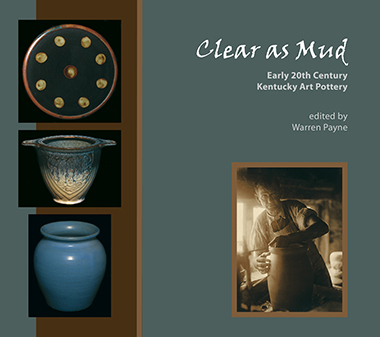
Clear as Mud: Early 20th Century Kentucky Art Pottery
edited by
Warren Payne
2010
Out of print
Clear as Mud is an award-winning look at art pottery produced in Kentucky in the first half of the 20th century. It deals with such potteries as Cornelison Bybee, Waco, the Bybee Pottery Co. of Lexington (Selden-Bybee, Genuine Bybee), Louisville Pottery Co. (Cherokee), Kenton Hills Porcelains and Hadley. Such other ceramics as art tile, drain-tile premiums and Western Kentucky's "pinch pots" are included.
The book places in context what was going on in the commonwealth with what was happening in the rest of the South, especially North Carolina and Georgia, and touches on the influences brought onto the regional scene.
Each chapter is written by a known collector or scholar and contains a concise history of the pottery, including, if possible, known potters, dates of operation, catalogs, etc. In some cases the histories overlap or conflict; much that is known is not as clear as one would like, which explains our title. Also included are known marks and tips on identifying unmarked pottery.
Clear as Mud was the recipient of the 2011 Independent Publisher Book Awards Bronze for Best South-East Regional Non-Fiction and a 2011 Kentucky History Award from the Kentucky Historical Society.
